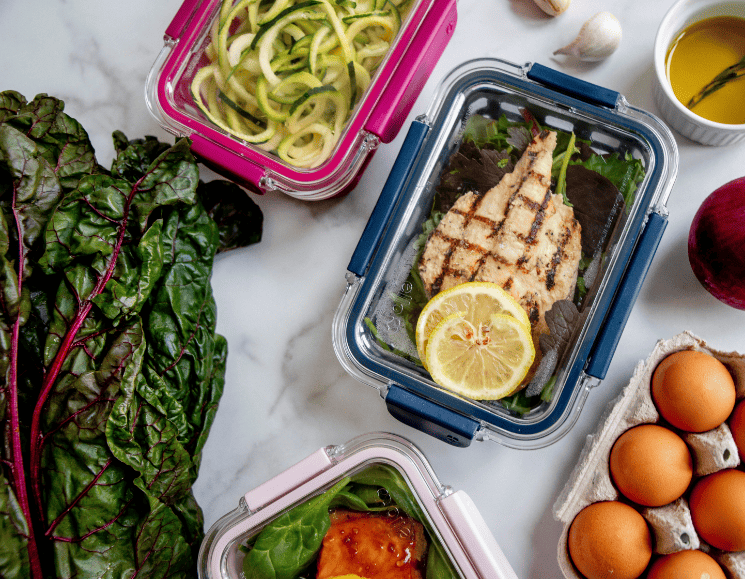What is Energy Balance?
Energy balance is the relationship between what we consume (food / drink) and what we expend (bodily functions, activity). Similarly to other relationship, things can get a little complicated from time to time. As such, I thought we’d spend a little time today talking about 3 ways to track your Energy Intake.
Why Do We Care About Energy Balance?
Currently, about 1/3rd of all U.S. adults are obese while about 1/6th of U.S. children (12-19-year-olds) are considered obese. The Center for Disease Control (CDC) classifies individuals having a Body Mass Index (BMI) greater than or equal to 30 as obese. An individual’s BMI examines the relationship between their height and weight and “can” be an indicator of body fatness, thus BMI serves as a potential screening tool but not necessarily as an assessment for body fatness.
Even more troubling than the percentage of Americans considered obese is the established relationship between obesity and many chronic disease states such as diabetes, heart disease, and cancer. The data would suggest we seem to be headed in the wrong direction. Additionally, complications resulting from many chronic disease states often include (but are not limited to) reduced quality of life and substantial financial hardship.
According to the CDC, obese folks, when compared to their normal or healthy weight counterparts, are at an increased risk for:
- All causes of mortality
- High blood pressure (hypertension)
- Higher levels of HDL cholesterol, lower levels of LDL cholesterol
- Higher levels of triglycerides (dyslipidemia)
- Type 2 Diabetes
- Coronary heart disease
- Stroke
- Gallbladder disease
- Osteoarthritis
- Sleep apnea
- Various cancers
- Lower quality of life
- Mental illness such as depression and/or anxiety
- Pain with physical function
Simply put, we are in a position where it’s time to start giving a f**k about what we eat and how much of it we eat. At any point, day or night, you have access to the most calorically dense, highly palatable food the world has ever seen. Read: super high calorie intake with very little / no energy expenditure. Currently, Netflix has a series on the development of flaming hot Cheetos. We live in a world where we must be aware of the food (or non food) we are consuming.

The 3 Types of Diets
Contrary to google, there are only 3 types of diets.
- Calorie Surplus (used to gain weight, especially lean mass)
- Calorie Deficit (used to lose weight, especially fat mass)
- Calorie Maintenance (used to maintain weight, often used to “recomp” folks)
However, the results above are not as readily accessible, instead, you’ll find a lot of information on particular diet strategies like Atkins, South Beach, The Whole 30, The Carnivore Diet, you can even find info on a soup diet. Hence the importance of this article. People need to understand how to get what they want, be able to disregard crap information, and recognize their options when attempting to make dietary changes.
By Diet… You Mean Weight Loss, Right?
At some point, the term diet became synonymous with weight loss. But you need to understand that everyone (that is alive) is on a diet, at all times. Given the information above (the three types of diets), a person can never not be dieting… again, assuming they’re alive. Now that we understand that, we can begin to understand that The Whole 30 isn’t a diet, rather it’s a strategy for how to approach one’s diet. I’m not much for The Whole 30 specifically, as restriction isn’t great for long term compliance and I like pop tarts every now and then. But it may work great for you. That’s cool.

How to Track Your Energy Balance
Let’s look at the specific strategies one can opt for when staring to track / manage their food intake.
- Actual Calorie Counting – this form of tracking actually requires weighing and measuring your food intake. You’ll need to know how to read food labels, have a scale, measuring cups, etc. This is a very traditional way to manage food intake.
- Template Eating – this form of tracking requires participants to eat in a certain way. An example here is the My Plate Method. Each plate you eat follows a standard template (that’s customizable). Eating based on a template allows you to manage your total calorie intake without much (or any) weighing or measuring. Effectively, the template is providing the guiderails to keep you intake in check. Another example here would be eating from a meal plan designed by a coach, dietician, etc. Essentially, the meal plan eliminates the need for much tracking / measuring on your part but still allows for you to hit your target intake each day.
- Elimination / Restriction – this form of tracking requires you to omit entire food types or groups. An example here would be a no carb diet plan (Atkins). Now this would make me very sad but it works well for others (we’ll talk about about why). This seems to currently be the most popular option and google will show you thousands of results in less than 1 second if you type in “types of diets”. Knock yourself out!
Which Tracking Approach Works Best?
Nutrition science tells us that it doesn’t really matter much, given a few assumptions. First, the calorie intakes must be equated when comparing different strategies along with time frames, and population samples. You can’t compare short term vs. long term, you can’t compare caloric deficit with caloric surplus / maintenance, you also can’t compare strictly controlled with self reported. The list goes on.
All of this is to say, there currently isn’t a recognized best approach. Rather, the recommendation is to find an approach that works for the individual. Keep in mind, you have to be able to live with the process to live with the results. Some folks will find restrictive dieting… well, restrictive. Given that eliminating an entire food type has no long term, unique benefit (save for certain medical scenarios which are well beyond the scope of our discussion), I would advocate for more variety and dietary options. On the other hand, folks just getting started or those that are desperate to lose weight now, might prefer a very restrictive approach initially. It keeps them in check and the rules make the program simple to follow. This can be valuable in the early stages.
Over time, effective nutrition coaching should build the skillset of the individual so they can begin to make decisions that work best for them. Life is complex and circumstances change frequently, so having a bigger dietary toolbox is always useful. We’ve all heard someone say “I need to get back on ….”. This is an example of someone that has a goal but does not have the skillset needed to accomplish their goal. They can use a “diet” in the short term (because it tells them exactly what to do) but they cannot make the leap to long term, sustainable nutrition work. In short, they need help making the leap. This is where coaching can be very valuable.
At Brentwood Barbell, nutrition coaching is one of our core programs. We work with folks in private and group settings and we get results (check out John’s progress). If you’d like to learn a little more about what we do, you can book a meeting here: Nutrition Consultation.
Talk soon,
James

